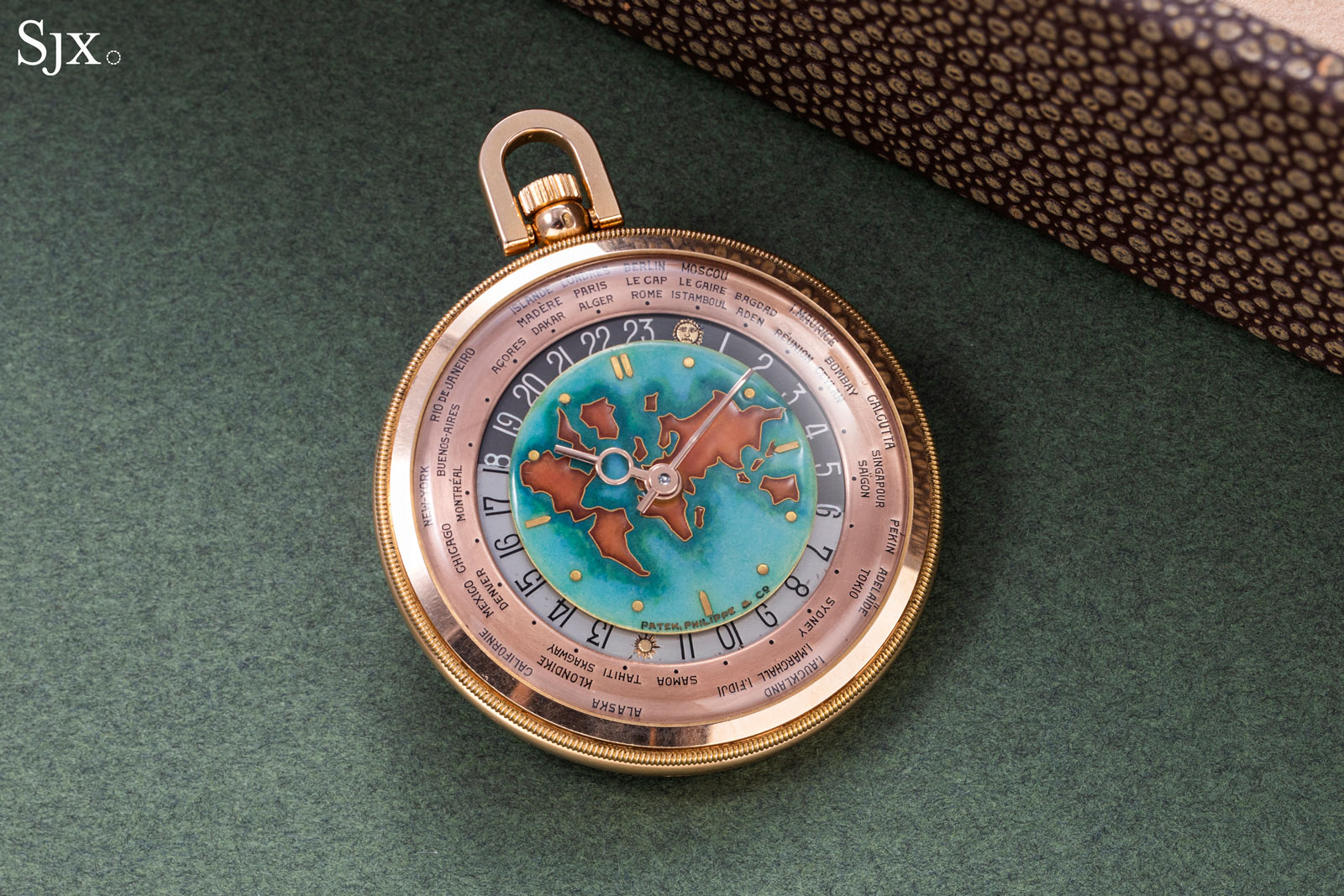Up Close: Patek Philippe Cloisonné World Time Ref. 605 HU DE “World Map”
A crisp, important masterpiece at Antiquorum.
One of the highlights this coming spring auction season in Geneva is prime example of a rare watch at Antiquorum. Consigned by the family of the original owner, the Patek Philippe World Time Cloisonné “World” ref. 605 HU DE in pink gold is both in fine condition and boasting a possibly unique combination of features, namely a pink gold case, a “world” motif cloisonné dial in unusual colours, and early “observatory” style hands.
Produced for some three decades from about 1937 to the 1950s, the ref. 605 HU (short for heure universelles, or “universal time”) is a quintessential Louis Cottier-type world time; its wristwatch counterpart was the ref. 2523 HU. Just over 80 were made over the production run, with about two-thirds in yellow gold and the rest in pink gold. They were made by Louis Cottier in his Geneva workshop in an artisanal manner, explaining the variances across examples.
Most were equipped with conventional metal dials, including rare examples in pink or black, but from the 1940s onwards, Patek Philippe began selling the ref. 605 HU with cloisonné enamel dials. Less than 20 were made with cloisonné dials, most depicting map motifs of some sort. A handful, maybe just two, featured figurative dials, including the ref. 605 HU in the Patek Philippe Museum with the Greek sea god Neptune on the dial (that Antiquorum sold in 1989).
This example is rare for having a map of the entire world – only two others are known – as well as being in pink gold. It is the only example in pink gold with a cloisonné “world” dial and a matching pink cities disc.
Moreover, the cloisonné dial is rendered in an uncommon set of colours, namely green-blue and dark orange, in contrast to other known ref. 605 HU with cloisonné dials that have more varied colours.
Also notable are the hands, which have a more linear form that’s also found on the unique ref. 605 HU “Neptune” in the Patek Philippe Museum. Most specimens of the ref. 605 HU have more decorative hands, sometimes an hour hand in the shape of a fleur-de-lis.
This is a relatively early example of a cloisonné dial ref. 605 HU, having been produced in 1943 and sold in 1946, which perhaps explains its unusual features. In fact, this example has the movement number “930’364”, making it one earlier than the ref. 605 HU “Neptune” with movement number “930’365”.
As is typical for a cloisonné dial in the ref. 605 HU, the reverse of the dial bears the movement number. Image – Antiquorum
According to Antiquorum, this ref. 605 HU was “kept unused in a safe”, which ordinarily might be taken with a pinch of salt as marketing. The statement, however, appears accurate as the watch is in sterling condition.
The city names are in French, while most examples of the ref. 605 HU have the disc in English
Like most high-end watches of the period, the lettering on the dial is in champleve enamel, giving each of the city names the characteristic look of the technique. With the dial being original and likely unrestored, the markings are well preserved.
Like other ref. 605 HU, this has hand-engraved Sun and Moon emblems on the 24-hour disc to indicate midday and midnight
The highest price ever achieved by a ref. 605 HU with a cloisonné dial was HK$16.05 million including fees, or about CHF1.86 million, for a yellow gold world map example that sold at Christie’s Hong Kong two years ago. That was one of two known in yellow gold with a world map, while this has a different world map and is in pink gold.
Delivered with an archive extract and fitted box, this ref. 605 HU DE is lot 591 in the sale on May 12, 2024, with an estimate of CHF1.0-2.0 million. For more, visit Antiquorum.swiss.
Back to top.